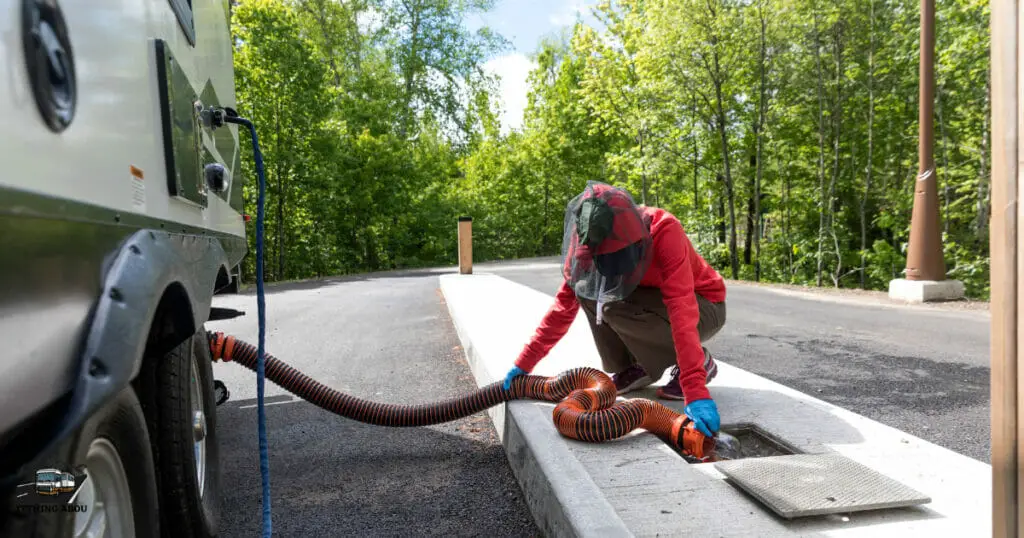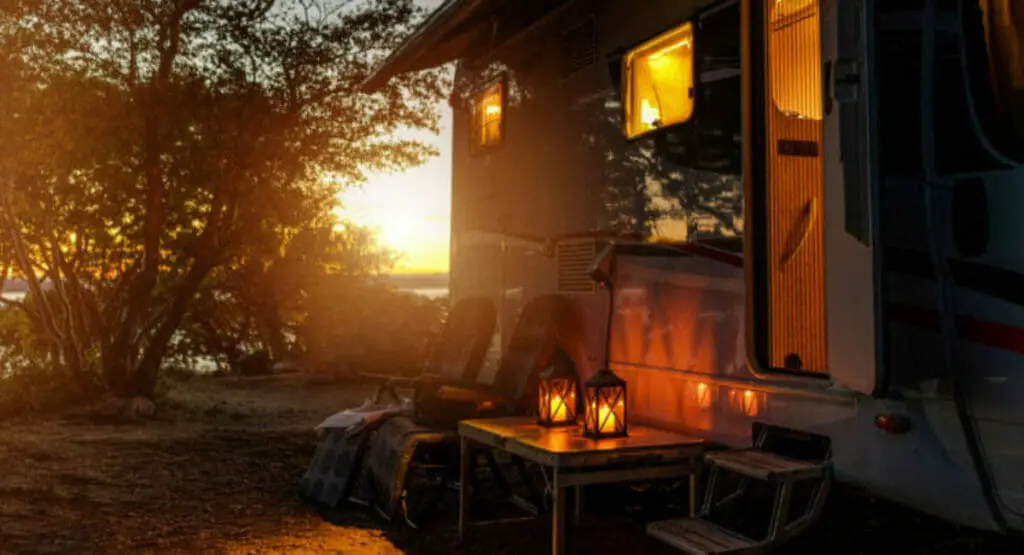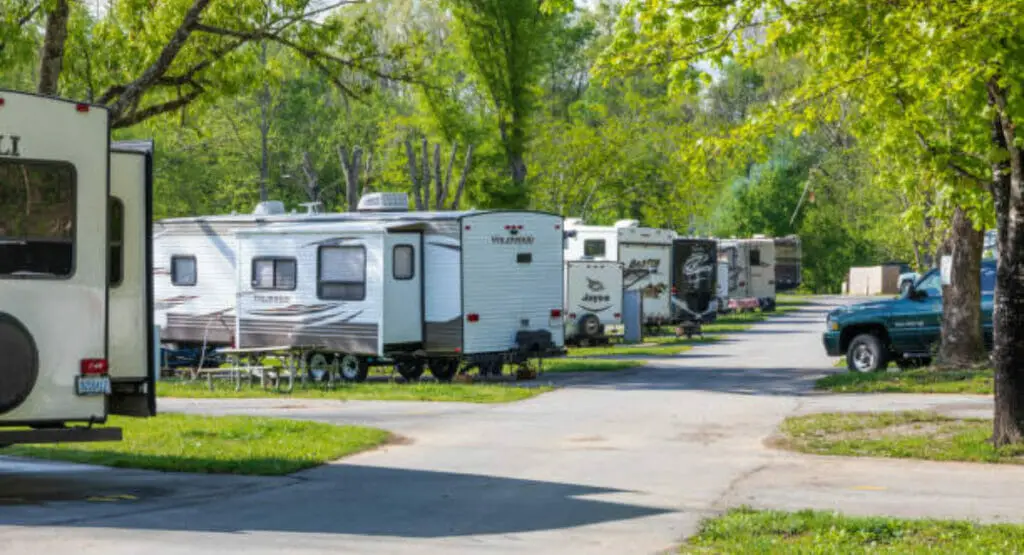For various reasons, proper RV sewage disposal is critical. It ensures the cleanliness and hygiene of your RV living space, prevents environmental contamination, and promotes appropriate RVing practices. Failure to properly dispose of RV sewage can result in unpleasant odors, unclean conditions, and potential harm to the surrounding ecosystems. Understanding the importance of suitable RV sewage disposal and using appropriate procedures allows you to contribute to a cleaner environment while also enjoying a more comfortable RVing experience. This tutorial will look into the numerous facets of RV sewage disposal, such as selecting good dump sites, examining alternate ways, and best practices for effective waste management.
I. Understanding RV Sewage Systems:
RVs have many sorts of sewage systems, and understanding them is critical for safe disposal and maintenance. The two most frequent types of RV sewage systems are as follows:
1. Tank for black water:
The black water tank is in charge of collecting and storing solid waste, which is normally from the RV’s toilet. To avoid clogs, odors, and potential damage to the RV’s plumbing system, it is critical to properly maintain and empty the black water tank.
2. Tank for Grey Water:
The grey water tank collects waste from sinks, showers, and kitchen appliances. Soaps, food particles, and other non-toxic trash may be present in grey water. It is critical to maintain the greywater tank properly to avoid overflow, bad odors, and potential contamination. Understanding the difference between black and grey water tanks allows RV owners to implement proper disposal procedures and preserve the longevity of their sewage systems.
II. Finding Suitable RV Dump Stations:
Finding adequate dump facilities for RV sewage disposal is critical. Here are some pointers to help you choose the best RV dump stations:
1. Identifying RV Dump Stations:
A. Online directories and apps: Use online tools like websites and mobile apps intended expressly to assist RVers in locating nearby dump stations. Popular sites such as RV Trip Wizard, AllStays, and Sanidumps offer extensive databases with customer evaluations and important information.
B. Websites for RV parks: Many RV parks have disposal stations exclusively for their guests. Inquire about availability and any fees involved with using their facilities on their websites or by calling ahead.
C. Local visitor centers and tourism offices: When visiting a new region, ask about nearby dump stations at local visitor centers or tourism offices. They frequently have useful information and can provide maps or booklets identifying appropriate areas.
2. Dump Station Facility Evaluation:
Before selecting a dump station, it is critical to evaluate its quality and amenities. Consider the following elements:
A. Cleaning and maintenance evaluation: Look for dump stations that are clean and well-maintained. Examine the dumping area for cleanliness, proper trash disposal, and the availability of gloves or sanitization materials.
B. Checking for freshwater and rinse hose availability: Check to see if the dump station has fresh water for rinsing and cleansing your RV’s sewage system. Some stations may have hoses or spigots dedicated to this purpose.
C. Checking for proper disposal methods: Confirm that the dump station uses proper sewage disposal methods that are in accordance with local legislation. Avoid stations that look to be environmentally irresponsible or to constitute a health danger to the public.
III. RV Sewage Disposal Alternatives:
There are other methods for RV sewage disposal outside typical dump stations. Consider the following methods:
1. Portable Waste Tanks and Composting Toilets:
A. How composting toilets function: By turning human waste into organic compost, composting toilets do away with the requirement for conventional sewage systems. They are eco-friendly and ideal for boondocking or off-grid RVing.
B. Advantages and disadvantages of portable waste tanks: Portable waste tanks make it simple to transfer sewage to authorized dump locations. They are especially beneficial when there are no direct sewer hookups at RV parks or campgrounds. When selecting a portable waste tank, consider tank volume, maneuverability, and convenience of emptying.
2. Options for Grey Water Disposal:
A. Grey water filtration systems: Grey water from sinks and showers can be treated on-site with DIY filtration systems. These systems aid in the removal of impurities, allowing the water to be used for irrigation or other non-potable purposes.
B. Using approved greywater disposal areas: Some campgrounds or RV parks have dedicated greywater disposal areas. Look for signage or ask campground personnel about suitable greywater disposal methods.
IV. RV Sewage Disposal Best Practices:
Follow these best practices to keep your RV sewage system running smoothly and odor-free:
1. Maintenance of the Black Tank:
- Regular tank flushing and cleaning: To minimize waste buildup and odors, empty and flush your black tank on a regular basis. For the greatest results, use RV-friendly tank cleaning solutions and follow the manufacturer’s instructions.
- Products for garbage decomposition and odor control: To help waste decomposition and manage odors, add enzyme-based waste breakdown products to your black tank. These products are available in liquid or tablet form and are intended for use in RVs.
2. Management of Grey Water:
- Reduce greywater generation by installing efficient fixtures and adopting water-saving habits. Limiting the amount of grey water produced minimizes the frequency of disposal and reduces the demand on the campsite or RV park facilities.
- Using environmentally friendly soaps and detergents when disposing of grey water: If dumping of grey water directly on the ground, use environmentally friendly soaps and detergents. The use of dangerous chemicals or compounds that can harm plants or wildlife should be avoided.
- You may assure a clean, efficient, and responsible approach to handling your RV sewage by following these steps and employing suitable RV sewage disposal systems. Always follow local legislation and campground requirements for sewage disposal.
Conclusion:
Properly draining RV sewage is a critical part of responsible RVing and environmental preservation. Maintaining a clean and odor-free sewage system is critical, regardless of whether you use traditional dump stations, investigate alternate alternatives, or adopt best practices. You can assure a smooth and responsible RV sewage disposal experience by following the instructions indicated in this article.
When it comes to disposing of RV sewage, remember to plan ahead, explore available services, and prioritize cleanliness and environmental concern. Happy RVing and traveling!



